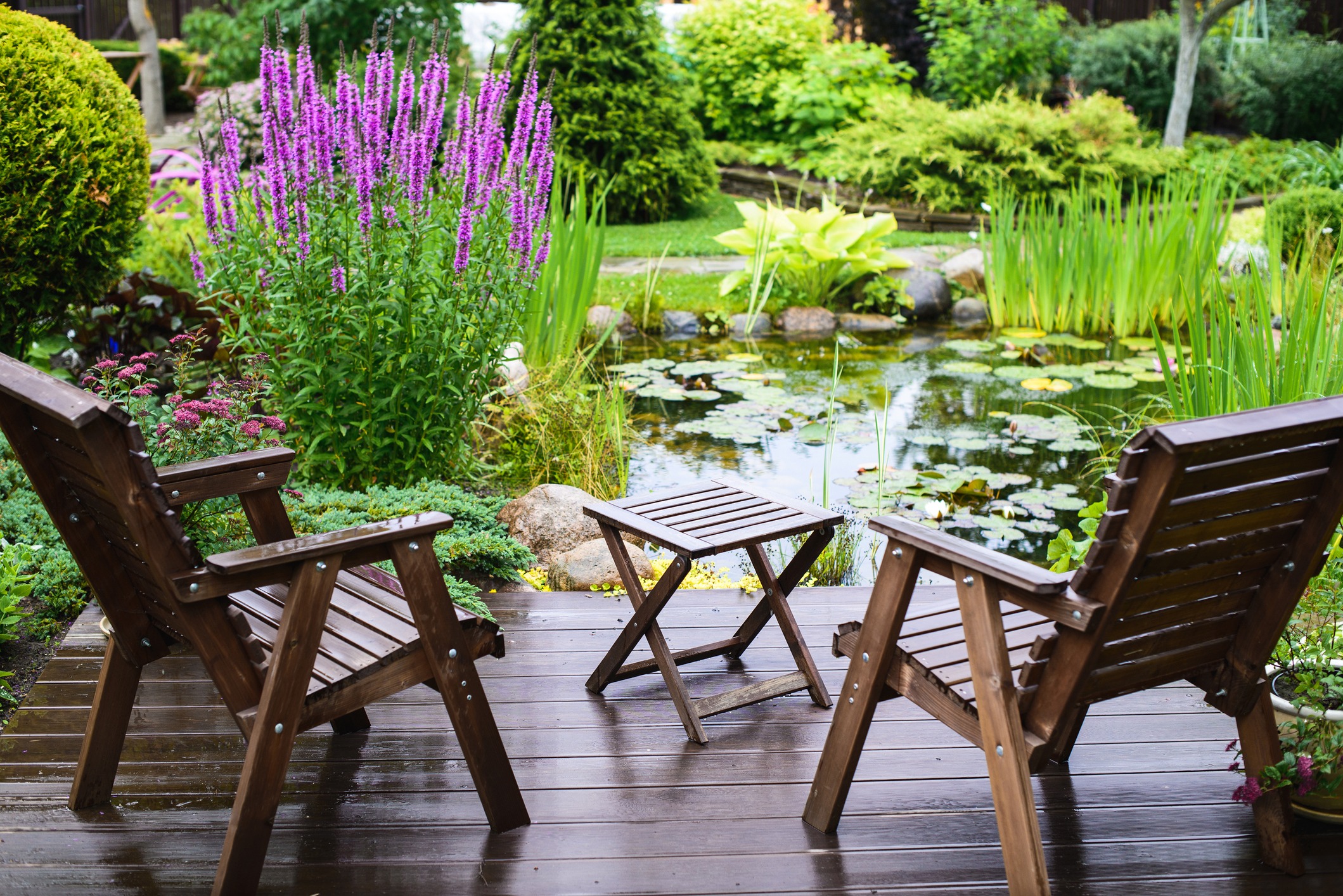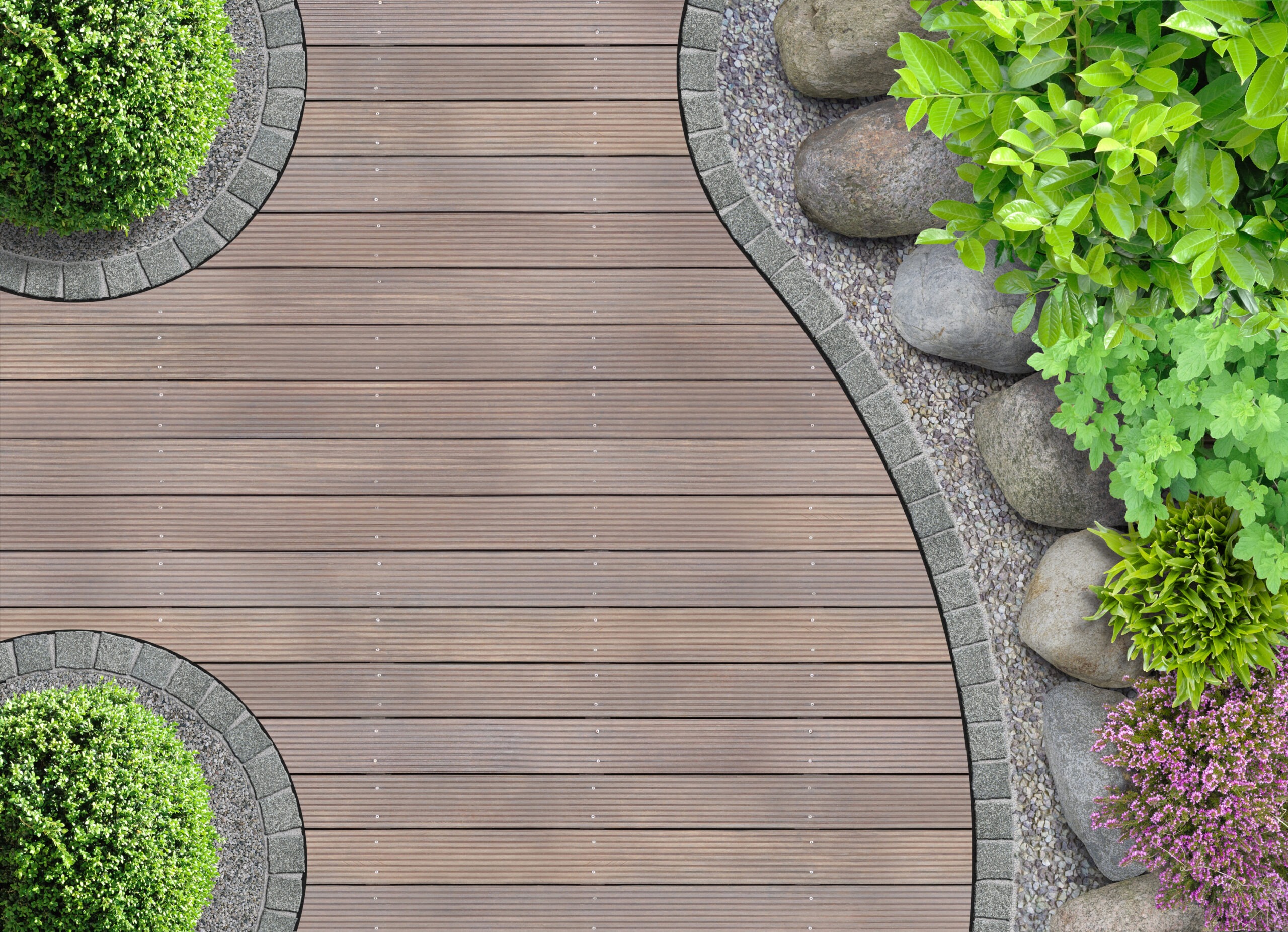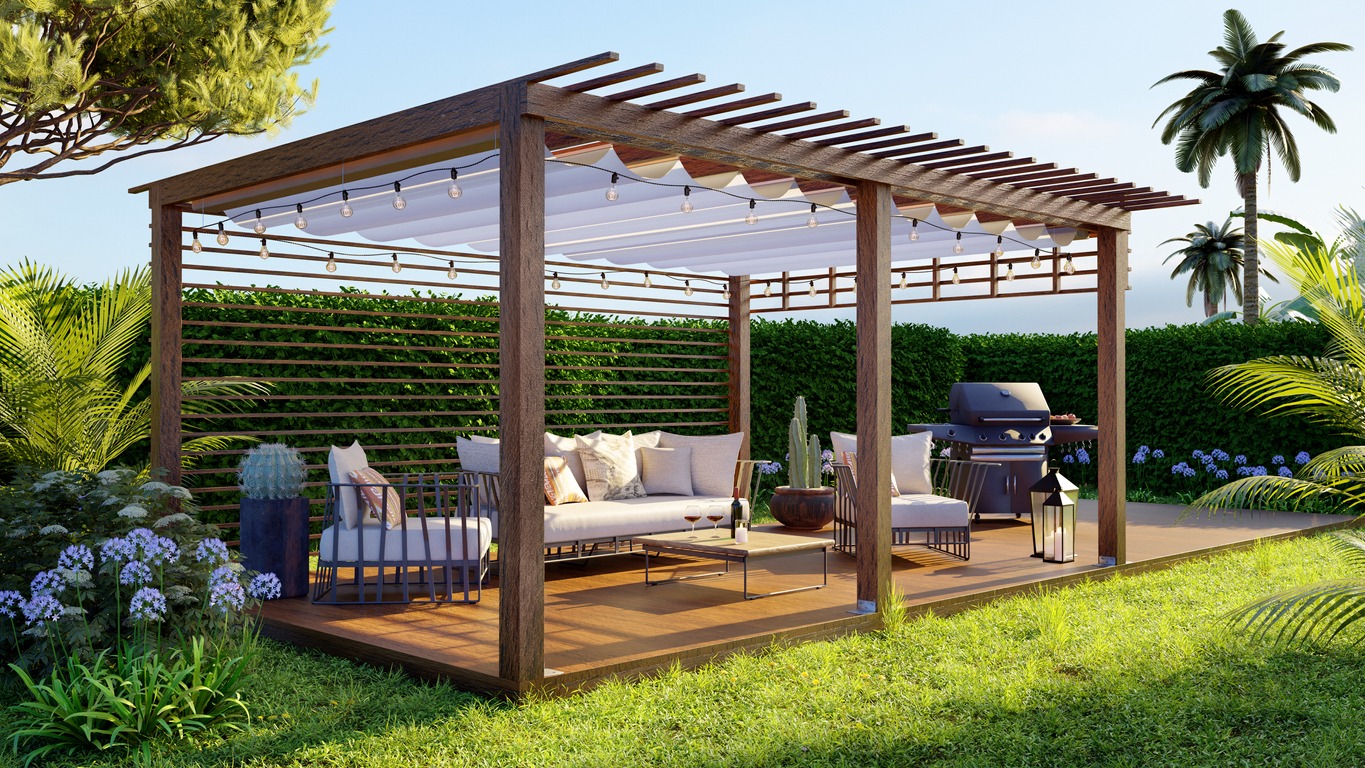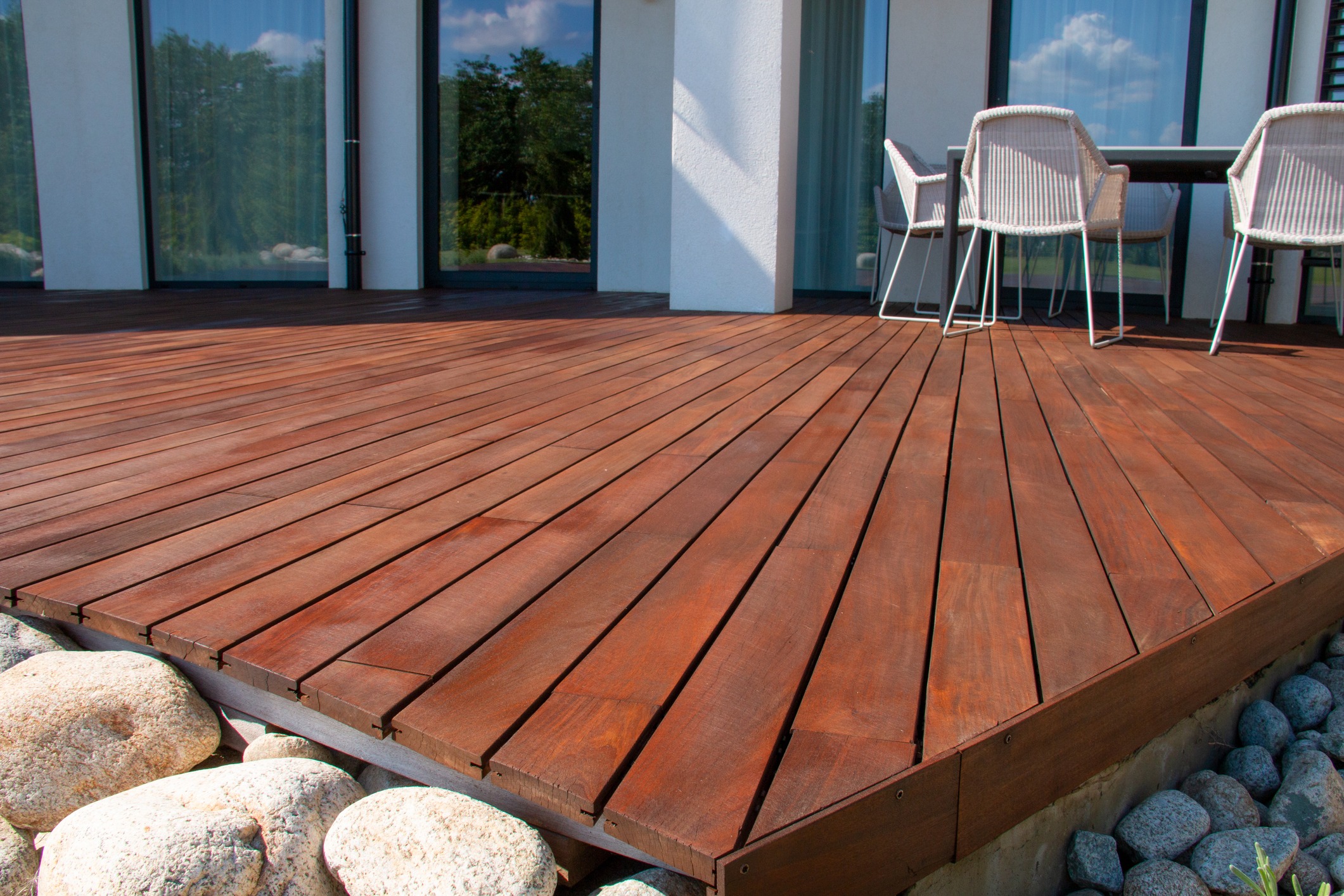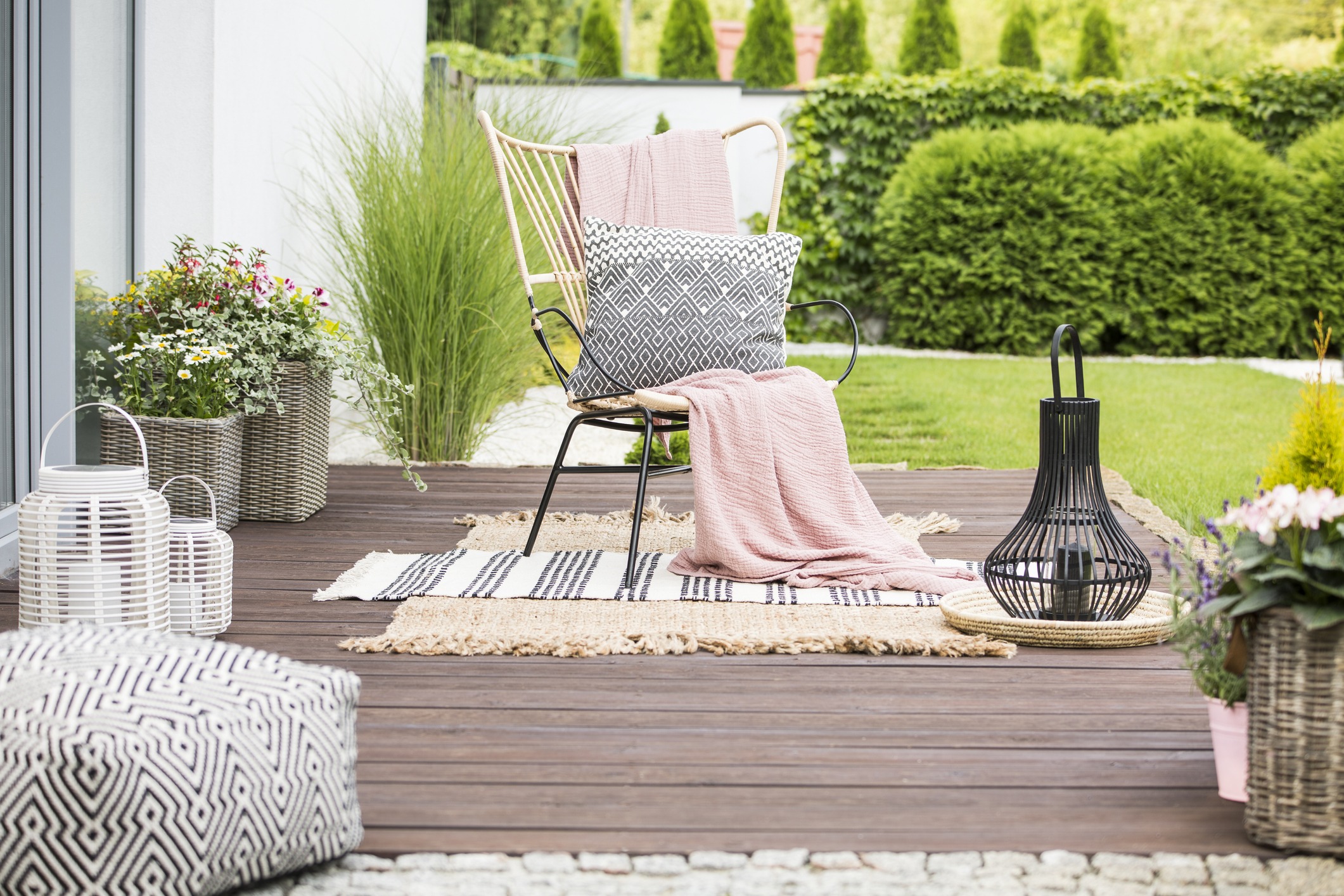Landscaping around a deck transforms an outdoor living area into a personal retreat that combines the comfort of indoor spaces with the beauty of the outdoors. Approaching this space with thoughtful design can lead to a seamless extension of a home’s aesthetic, providing a place to entertain guests, relax in solitude, or engage with nature. Strategically chosen plants and design elements not only enhance the visual appeal but can also address functional needs, such as privacy or shade.
When considering landscaping ideas for around a deck, it’s important to balance the size of the space with the scale of the chosen plants and features. Large decks benefit from bold focal points like small trees or clusters of shrubs, which avoid a feeling of emptiness. In contrast, for smaller decks, careful selection of perennials and ornamental grasses can create an intimate ambiance without overwhelming the area. The right mix ensures that the deck feels like a cohesive part of the landscape rather than an isolated structure.
Creating a connection between deck and landscape is key for maximizing the value of an outdoor area. Utilizing a variety of textures, colors, and heights in planting choices leads to a rich tapestry that changes with the seasons, while hardscape elements like stones or pavers can provide transition zones that ease the visual shift from deck to garden. The integration of these aspects, when done skillfully, enhances the overall living experience and can significantly improve the usability and enjoyment of the outdoor space.
Design Considerations for Deckscape
When landscaping around a deck, the primary considerations should focus on the utility of space, aesthetic style, and the balance of privacy with views. These factors guide the transformation of a deck into a harmonious outdoor extension of a home.
Maximizing Your Space
Maximizing outdoor space is key to a functional and enjoyable deckscape. Homeowners should first assess the deck size and surrounding area to determine the feasibility of different landscape features. For small spaces, one can use vertical planters or compact shrubs to enhance the area without overwhelming it. A larger space allows for the inclusion of trees or a varied tier of plant heights, providing both shade and visual interest.
- Compact Areas: Utilize vertical garden walls, hanging baskets, and slender plants.
- Expansive Areas: Incorporate larger elements such as trees, shrub clusters, and garden beds.
Choosing a Style for Cohesion
Selecting a style ensures a cohesive look that complements the home and deck design. Whether it’s a modern, minimalist approach with structured plantings and geometric patterns or a rustic, cottage-style garden filled with flowering perennials, the style chosen should reflect the overall aesthetic of the home.
- Modern: Opt for clean lines, evergreen shrubs, and a neutral palette.
- Rustic: Embrace vibrant flowers, ornamental grasses, and natural stone pathways.
Integrating Privacy and View
Privacy and unobstructed views can coexist with strategic landscaping. Privacy can be achieved without sacrificing light or scenery through the use of lattice screens, tall grasses, or trellises with climbing vines, which can act as natural partitions. Simultaneously, framing a view with key plantings can draw the eye outward, enhancing the connection to the natural surroundings.
- Privacy Features: Lattice, screening plants, trellises.
- View Enhancement: Frame views with specialty plants, avoid tall blockades in key sightlines.
Selecting Plants and Shrubs
When landscaping around a deck, selecting the right combination of plants and shrubs can enhance the beauty and functionality of the space. It involves integrating seasonal color, structural stability through trees and shrubs, and considering low-maintenance plant options.
Planting for Seasonal Color
Landscapers emphasize the importance of creating year-round visual interest. Perennials provide a variety of colors with blooms at different times of the year. For instance, Heuchera ranges from green to deep red foliage, offering multi-seasonal appeal. Incorporating a mix of flowering perennials ensures a deck that remains vibrant through the seasons.
Trees and Shrubs for Structure
Trees and shrubs can define the aesthetic and structure of deck surroundings. When choosing these, one should consider the mature size and the space available. Small trees like the Japanese Maple add vertical interest without overwhelming the area. Evergreens like Boxwoods are sturdy shrubs providing year-long greenery and can serve as a backdrop or to frame the deck gracefully.
Low-Maintenance Plant Options
For those seeking minimal upkeep, low-maintenance plants are optimal. Shrubs such as the Kodiak Orange Diervilla remain hardy and resist pests, reducing the need for frequent care. Ornamental grasses grow effortlessly and can complement the deck’s natural wood tones, while requiring minimal attention. They provide a low-effort way to add texture and movement to the garden space.
Material Selection for Deckscape Elements
A thoughtful selection of materials is essential when landscaping around a deck, as it determines both the aesthetic appeal and longevity of the garden features.
Choosing Soil and Mulch
The foundation of any plant-based landscape is the soil. It should be rich in nutrients and have good drainage to ensure plant health. One can choose from a variety of soils specifically tailored for different types of plants or garden areas. Mulch is a critical component that helps retain moisture, suppress weeds, and enhance soil quality. For mulch, consider organic options like bark chips or straw; they break down over time to enrich the soil.
- Preferred Soil Types:
- Loamy soil for balanced moisture
- Sandy soil for enhanced drainage
- Mulch Choices:
- Organic mulches like cedar bark
- Inorganic mulches such as rubber chips for longevity
Rocks and Stones as Accents
Rocks and stones bring a natural, textural element to deck surroundings. They are excellent for creating pathways, defining beds, or even as a decorative mulch alternative. Stones come in various hues and can be chosen to complement the decking material or contrast it for a dramatic effect.
- Stone Types for Accentuation:
- River rocks for a smooth, rounded aesthetic
- Flagstones for a flat and natural path surface
- Gravel as a low-maintenance ground cover
Metal and Wood Edging Choices
Edging defines the boundaries between the deck and the planted areas, often increasing the visual appeal. Metal edging, such as steel or aluminum, offers a sleek, modern look and is quite durable. For a more natural appearance, wood edging can blend seamlessly with the deck and surrounding plants.
- Edging Material Pros & Cons:
| Material | Pros | Cons
|
|---|---|---|
| Metal | Long-lasting, clean lines | Can rust or be costly |
| Wood | Natural look, versatile | May rot or require regular upkeep |
When selecting materials for landscaping around a deck, consider these specifics to ensure a harmonious and lasting outdoor environment.
Creating Functional Outdoor Living Spaces
Outdoor living spaces become an extension of one’s home when properly landscaped, combining aesthetics with functionality to produce areas ideal for relaxation and entertainment.
Incorporating Pergolas and Arbors
Pergolas and arbors serve not just as visual highlights in a garden but also as frameworks for outdoor living spaces. They can be strategically positioned to provide filtered shade on sunny decks, creating a comfortable atmosphere for visitors. When adorned with climbing plants, they form natural, leafy canopies that enhance the serenity of the patio.
Deck Furniture and Comfort Features
The choice of furniture is pivotal in defining the comfort level of an outdoor space. For decks meant for entertainment, one should consider weather-resistant sectionals or dining sets that propose both style and durability. Incorporating features like plush cushions, outdoor rugs, and throw pillows invites a sense of comfort that rivals indoor living areas. Additionally, thoughtful placement of outdoor lighting extends the usability of these spaces into the evening hours.
Hardscape and Landscape Integration
Integrating hardscape and landscape around decks enhances functionality and aesthetics. It provides seamless transition between the outdoor living space and the natural surroundings.
Steps and Stairs Design
Steps and stairs are crucial for connecting different levels within a deck’s landscape. Their design should ensure safety while complementing both the deck’s structure and the garden’s character. Utilizing stones and timber can marry the look of the hardscape stairs to the overarching landscape. For example, wide, shallow steps flanked with perennial plants create an inviting pathway, while ensuring each step is well-defined and secure.
Using Borders and Edging
Borders and edging serve as definitive lines that delineate the hardscape areas, like patios, from the adjoining landscape. A border made of natural stone or pavers can echo the deck’s materials, providing a cohesive look. Meanwhile, edging delivers a tidy framework for the softscape. Strategic plantings along these borders can soft-focus the transition between the constructed and natural elements, resulting in a polished yet integrated outcome.
Accessory Features and Decorative Touches
When elevating deck design, accessory features and decorative touches can merge aesthetics with function, providing both visual appeal and practical benefits to the outdoor space.
Ornamental Features for Visual Interest
Art and Decor: Strategically placed art pieces can transform a deck into a gallery-like space. Metal sculptures or weather-resistant paintings add personality, while hanging ornaments can animate the area with gentle movement.
Ornamental Trees: Carefully selected ornamental trees can serve as natural sculptures, offering both shade and an artistic focal point. Japanese Maples or small conifers can frame a deck beautifully when planted in decorative pots or directly into the surrounding landscape.
Functional Accessories for Deck Utility
Decking and Railings: The choice of decking material and the design of railings can substantially affect a deck’s utility and style. For example, wider railings can provide space for setting drinks, and built-in bench seating can enhance the functionality of the space.
Decorative Plants: Utilizing decorative plants in planters can add both function and beauty to a deck. They can create privacy barriers when placed along the edges or add fresh scents and color when flowering plants are selected. Herb gardens in raised planters can provide both culinary function and greenery.
Art of Landscaping: Maintaining the Aesthetic
When landscaping around a deck, one’s objective is often to create a visually appealing area that complements the structure. Effective maintenance is key to preserving both the look and health of the space.
Seasonal Maintenance Tips
Spring:
- Inspect and Clean: They should check the deck and surrounding plants for winter damage and clear any debris.
- Pruning and Planting: She can prune overgrown shrubs and add seasonal blooms to freshen the look.
Summer:
- Irrigation and Mulching: Regular watering schedules and mulch application become essential to protect plants during heat.
Fall:
- Preparation for Dormancy: It’s time to remove spent annuals and prepare perennials for the coming cold.
Winter:
- Protection Measures: Wrapping delicate shrubs and utilizing evergreens can maintain aesthetics even in dormancy.
Long-Term Care for Deck Landscaping
Infrastructure Maintenance:
- Regular inspection for rot or insect damage on wooden decks ensures longevity.
- Sealing and staining the deck every 2-3 years could be a wise preventive measure.
Plant Health and Aesthetics:
- Diversify plant types for year-round interest and resilience against pests and diseases.
- Implement structure with perennials and shrubs for permanent outline and form.
By adhering to these maintenance strategies, one can ensure the landscaping endures and the aesthetic appeal of their deck area remains captivating through the seasons and over time.
Final Thoughts
Landscaping around decks is not just an aesthetic choice but a transformative approach to enhancing your outdoor living space. Thoughtful landscaping can create a seamless transition between indoor and outdoor areas, making your deck an inviting extension of your home. Whether it’s through the strategic use of plantings to provide privacy and shade, the incorporation of complementary materials and textures, or the addition of lighting and decorative elements, each aspect of landscaping around your deck plays a crucial role in creating a cohesive and enjoyable outdoor environment. These enhancements not only increase the visual appeal and comfort of your deck but also contribute to the overall value of your property. With creativity and careful planning, your deck can become more than just a structure; it can evolve into a cherished living space where memories are made, offering a personal haven for relaxation and entertainment.


